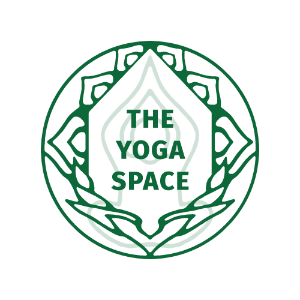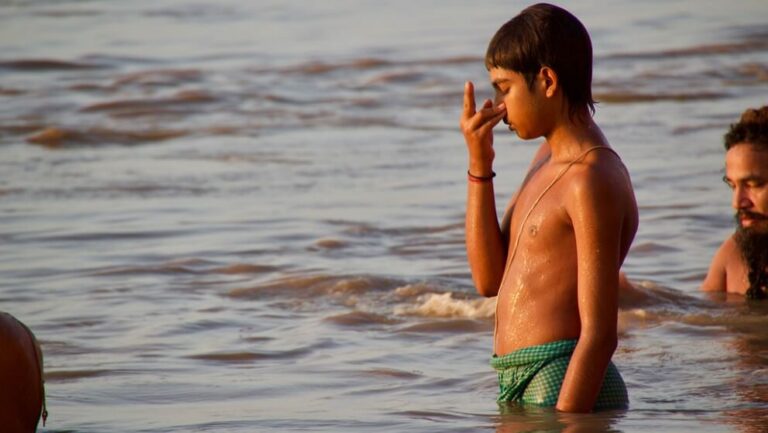An insight into the traditional ashtanga pranayama sequence, practiced after asana, as directed by Manju Jois
http://grimmly2007.blogspot.co.uk/2013/09/ashtanga-pranayama-and-meditation.html – Anthony Grim Hall http://ashtangaseries.blogspot.co.uk/2010/02/ashtanga-pranayama.html
When should I practice the pranayama sequence? Manju Jois teaches Pranayama and Chanting at the end of practice, at the end of Primary, at the end of his led 2nd series (with the Sanskrit count). He referred to this as a traditional practice. In the final padmasana, we practiced nadi shodana pranayama with kumbhaka followed by chanting. A traditional Ashtanga Practice. You don’t have to practice that way of course, you can do utpluthi at the end before laying back in savasana. I prefer the pranayama and chanting option – It’s my own preferred approach to practice. Ramaswami put it like this, and I think he was loosely quoting Krishnamacharya here, “Why clean the room (asana/pranayama) and then not live in it” ( meditation).
A note about the chanting: Ramaswsami refers to chanting here as Dharana, it’s one of the meditative limbs of Ashtanga, concentration on an object (next, according to Patanjali you would move on to concentration without an object). The object might be an icon, the breath, or here a mantra. Ramaswami would have us practice Japa mantra meditation, repeating a short mantra over and over, Manju happens to have has us chant a number of Shanti (peace mantras). I guess you could replace your own preferred approach to meditation practice here if you not yet comfortable with chanting ( I wasn’t for the longest time)
Manju’s finishing routine seems to go something like this.
Shirsasana ( long stay here)
Ardha chandrasana (still in headstand but bringing the legs down to parallel with the floor, an inverted dandasana if you like, lower and raise three times).
Balasana
Baddha padmasana
Yoga mudra ( and Manju pointed out it should really be the top of the head not the chin on the mat)
Parvatasana (mountain pose still in full lotus – this is the final posture on the Nancy Gilgoff 1974 syllabus and on David Williams poster). It’s in two stages, in the first the arms go up with the finger interlaced then you you bend forward, head to the mat, arms outstretched above your head, hands still interlinked. Stay for a number of breaths then raise back up to seated and lower the arms.
Padmasana – Bhairava/Bhairavii Mudra – Palms of hands together (in the lap), Men right palm up, women left palm up. Bruumadhya drishti, dash dirgha rechaka puuraka
ANTARA KUMBHAKA Suspension of breath after full inhalation
BAHYA KUMBHAKA Suspension of breath after full exhalation
BANDHA Bondage or fetter
BHASTRIKA Bellows
BEDHANA Bhid = to pierce, break through
CHANDRA Moon
JALA (As in jalandhara) Net, web, mesh
KUMBHAKA Retention of breath
MULA Root
PURUKA Inhalation
RECHAKA Exhalation
SITALI Sitala = cool
SURYA Sun
UDDIYANA Flying upBandhas in Pranayama
Jalandhara Bandha: During Antara Kumbhaka (inhale retention)
Uddiyana Bandha: During Bahya Kumbhaka (exhale retention)
Mula Bandha: All of the time
Pranayama sequence 1) Rechaka Kumbhaka and Puruka Kumbhaka
2) Puruka Rechaka Kumbhaka
3) Nadi Shodhanaa. Sama Vrttib. Visama Vrtti
4) Bhastrika
5) Bhedanaa. Surya Bhedanab. Chandra Bhedana
6) Sitali
PRACTICE OF PRANAYAMA
To begin:
3 Ujjayi breaths (with ujjayi breathing, ratio of inhale to exhale is 1 : 1)
Inhale, with the exhale chant AUM
1) Rechaka and Puruka Kumbhaka
a. Rechaka Kumbhaka
Inhale, exhale then hold breath
Repeat for a total of three breaths
Then immediately begin Puruka Kumbhaka
b. Puruka Kumbhaka
Inhale, hold breath, then exhale
Repeat for a total of three breaths
c. The ratio of the length of the inhalation of breath to the exhalation of breath should be 1 : 1
d. Ratio of the length of the retentions for exhale (rechaka) vs inhale (puruka) is 2 : 3, for example, if the retention after the exhale lasts 6 seconds, the retention after the inhale should last 9 seconds
e. 3 Ujjayi breaths as a transition before next stage of pranayama
2) Puruka Rechaka Kumbhaka
a. 3 breaths with retention after both the inhale and the exhale
b. Ratio of retentions for inhale (puruka) vs exhale (rechaka) should be 5 : 4. for example if the retention after the inhale lasts 10 seconds, the retention after the exhale should last 8 seconds
c. 3 Ujjayi breaths as a transition before next stage of pranayama
3) Nadi Shodhana
a. Sama Vrtti (same action)
1. inhale through both nostrils
2. exhale through left nostril, no retention
3. inhale right, hold 1st retention
4. exhale left, hold 2nd retention
5. inhale left, hold 3rd retention
6. exhale right, hold 4th retention
7. inhale right, hold 5th retention
8. exhale left, hold 6th retention
9. inhale left, hold 7th retention
10. exhale right, hold 8th retention
11. inhale right, hold 9th retention
12. exhale left, hold 10th retention
b. Visama Vrtti (irregular action)
13. inhale right, hold 11th retention
14. exhale right, hold 12th retention
15. inhale right, hold 13th retention
16. exhale right, hold 14th retention
17. inhale right, hold 15th retention
18. exhale right, hold 16th retention
19. inhale right, hold 17th retention
20. exhale left, hold 18th retention
21. inhale left, hold 19th retention
22. exhale left, hold 20th retention
23. inhale left, hold 21st retention
24. exhale left, hold 22nd retention
25. inhale left, hold 23rd retention
26. exhale left, hold 24th retention
27. inhale left, hold 25th retention
28. exhale right, hold 26th retention
29. inhale right, no retention
30. exhale left
c. Ratio of inhalations, exhalations and retentions is 1 : 1 : 1 : 1
d. 3 Ujjayi breaths as a transition before the next stage of pranayama
4) Bhastrika
a. In a seated position, hold the tops of the feet and pull them back into the abdomen
b. Slow inhalation
c. Perform a series of rapid, vigorous exhalations followed by reflexive inhalation through both nostrils (50 to 100 cycles)
d. Pull the lower abdomen back strongly during the exhalation, using both uddiyana bandha and mula bandha
e. With the last exhalation, fully empty the lungs
f. Slow inhalation
g. Long retention after inhalation, 20 – 40 seconds
h. Exhale
i. Repeat the inhale, vigorous exhale/reflexive inhale x 100, slow inhale, hold x 20 – 40 seconds, exhale sequence for a total of 3 cycles
j. 3 Ujjayi breaths as a transition before the next stage of pranayama
5) Bhedana
a. Surya Bhedana
1. Inhale through both nostrils
2. Exhale left, no retention
3. Inhale right, long hold (retentions are for 30 – 60 seconds)
4. Exhale left
5. Inhale right, long hold
6. Exhale left
7. Inhale right, long hold
8. Exhale left
b. Chandra Bhedana
9. Inhale left, long hold
10. Exhale right
11. Inhale left, long hold
12. Exhale right
13. Inhale left, long hold
14. Exhale right
15. Inhale right, no retention
16. Exhale left
c. 3 Ujjayi breaths as a transition before next stage of pranayama
6) Sitali
a. Open the mouth and form the lips into an “O”
b. Curl the tongue and extend it slightly through the lips
c. Inhale through the tongue, short retention (3-6 seconds)
d. Exhale through both nostrils
e. Repeat for a total of three breaths
f. 3 Ujjayi breaths
7) Finishing
Inhale
Begin chants during exhalation
Yoga Chants
Om Narayanam Padmabhuvam Vashistam Shaktim
Tatputra Parasharancha Vyasam Shukam
Gaudapadam Mahantam Govinda Yogaindram
Athasya Shishyam Shri Shankaracharyam
Athasya Padmapadancha Hastamalakancha
Shishyam Tantrotakam Vartekakara Mukyam
Asmat Gurun Santatamanatosmi
(I am always bowed to our teachers—Narayanam, the first teacher, Brahma the Lotus Born, Vashista and his son Shaktim, Vyasa and his son Parasharancha, Gaudapada the Great, Govinda, Lord of Yogis and his disciple Shri Shankaracharya, and his disciples Padmapadancha and Hastamalakancha, and the author Varteka Trotakam)
Vande Gurunam Charanaravinde
Sandarashita Swatma Sukhava Bhode
Nishreyase Jangalikaya Mane
Samsara Halahala Mohashantiye
Abahu Purushakaram
Shankachakra Asi Dharinam
Sahasra Shirasam Swetam
Pranamami Patanjalim OM
(I respectfully bow to the lotus feet of my teacher, who teaches the knowledge of the Self that awakens us to great happiness, who is the Jungle Physician and dispeller of the poison of conditioned existence. Taking the form of aman up to the hands, holding a conch, a discus and a sword, and having a thousand heads of white light, Pantanjali, I bow to you.)
Sahanavavatu Sahanau Bhunaktu Saha Viryam
Karava Vahai Tejas Vinau Adhitamastu
Ma Vidvisha Vaha-i-i
OM Shanti Shanti Shanti
(May wisdom protect and nourish us, let us work together for wisdom, may our study be illuminating, may we never be at discord)
OM Namo Brahmavidibhyo Brahmavidya Sampradaya Karatrobhyo Namo
Vomsharishaibhyo Namo Mahadibhyo Namo Gurubhyaha
Sarva Uplaplava Rahita Prajnanaghana Pratagarthaha
Brahma Iva Aham Asmi
OM Tat Sat
(Salutations to Brahma and the originators of His wisdom, salutations to the sage of our family lineage, salutations to the great teachers. I am Brahma only, perfect consciousness, devoid of all misfortune.)

